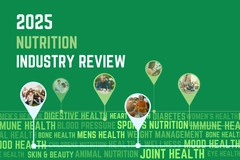
- Industry news
Industry news
- Category news
- Reports
- Key trends
- Multimedia
Multimedia
- Journal
- Events
- Suppliers
Suppliers
- Home
- Industry news
Industry news
- Category news
- Reports
- Key trends
- Multimedia
Multimedia
- Events
- Suppliers
Suppliers
Treating non-alcoholic fatty liver disease with low-sugar diet holds “clinical relevance,” study finds

23 Jan 2019 --- A diet low in free sugars – those added to foods and beverages and occurring naturally in fruit juices – resulted in significant improvements in non-alcoholic fatty liver disease (NAFLD) in adolescent boys. This is according to findings from the University of California San Diego School of Medicine and the Emory University School of Medicine in the US. Although a healthy diet is recommended for managing NAFLD, a diet specifically low in sugar was an “unproven treatment,” yet the US researchers found that it was successful in reducing liver fat in participants. There may be clinical potential in a low-sugar diet for treating the disease, the researchers note.
NAFLD is the most common liver disease in children and is associated with Type 2 diabetes, end-stage liver disease, liver cancer and cardiovascular disease. Currently, there are no pharmacological treatments for NAFLD, with diet and exercise representing the first line of treatment in its management.
 Jeffrey Schwimmer, MD, professor of clinical pediatrics at UC San Diego School of Medicine.
Jeffrey Schwimmer, MD, professor of clinical pediatrics at UC San Diego School of Medicine.
“With more than five million children having NAFLD, this is a disease that is much more common and serious than most people are aware of. An effective treatment is crucial for long-term health,” says lead author of the study, Jeffrey Schwimmer, MD, Professor of Clinical Pediatrics at UC San Diego School of Medicine.
“Although there is enormous controversy about diet, we know that sugar can play a strong role in the development of liver fat. Our study targeted free sugar based upon a combination of the biology of NAFLD and the real-world practicality of a diet that is achievable and that could be an effective treatment,” he adds.
The study included 40 boys ages 11 to 16 with diagnosed NAFLD. Half of the boys, along with their families, were provided a diet low in free sugars (less than 3 percent of daily caloric intake), and half ate their usual diets for eight weeks. Reducing sugars in the diet involved decreasing glucose, fructose and sucrose, commonly found in sweetened foods and beverages and in naturally sweet fruit juices.
Researchers interviewed the participants and their families, took inventory of the food in their home and removed foods that did not meet study requirements. The research team helped the families plan meals, grocery shop, cook and prep meals. The diet was for the entire family and was designed to be as similar as possible to their regular diet, minus the sugar.
“Although pediatric guidelines for managing non-alcoholic fatty liver disease recommend a healthy diet, focused reduction of sugary foods and beverages was an unproven treatment,” says senior author of the study, Miriam Vos, MD, MSPH, Professor of Pediatrics at Emory.
The study sought to measure changes in liver fat at baseline and after eight weeks of therapy, based on magnetic resonance imaging proton density fat fraction measurement – a state-of-the-art method to quantify lipids in the liver that was developed at UC San Diego.
The researchers found that the boys in the low free sugar diet group had a reduction in liver fat of 31 percent on average, while the boys in the typical diet group showed no improvement. Blood test measures of liver inflammation also indicated significant improvement for children in the low free sugar group compared to the typical diet group.
“The substantial improvement seen in just eight weeks makes us believe that a diet low in free sugars has the potential be a clinically relevant treatment,” says Schwimmer. “The next steps will be to take what we have learned and test this approach in a way that empowers families to control the diet themselves for a long enough time to see if we can effectively treat NAFLD and prevent cirrhosis, liver failure and liver cancer.”
“Changes to the nutrition supply can have large public health effects; if the food supply contained less added sugar it would likely have broad ranging benefits with regards to rates of liver disease, diabetes, and cardiovascular disease,” he tells NutritionInsight.
“We are excited by the highly significant results but also realize that a longer study will be needed in order to understand if sugar reduction is sufficient to ‘cure’ NAFLD,” concludes Vos.
Although there is no one treatment for NAFLD, last year BASF launched Hepaxa, its first-to-market omega 3 product dedicated to the dietary management of the disease. Hepaxa increases the levels of fatty omega 3 acids in patients, which improves the liver's ability to process fat.
A further important feature of the supplement is that Hepaxa is manufactured using a patented purification technology which removes certain pollutants known to harm NAFLD patients. A recent meta-analysis of 18 studies, in part funded by BASF, has highlighted the importance of omega 3 intakes among people who have NAFLD.











